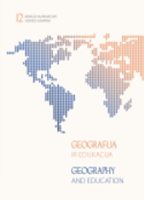PABĖGĖLIŲ STOVYKLŲ POVEIKIO APLINKOS EKOLOGIJAI VERTINIMAS ATLIEKANT PALYDOVINIŲ VAIZDŲ ANALIZĘ
ASSESSING THE IMPACT OF REFUGEE CAMPS ON THE ENVIRONMENTAL ECOLOGY USING SATELLITE IMAGE ANALYSIS
Author(s): Laura ValatkaitėSubject(s): Energy and Environmental Studies, Environmental Geography, Maps / Cartography, Environmental interactions, Migration Studies
Published by: Lietuvos geografų draugija
Keywords: graphical indicator; satellite imagery; remote sensing; refugee camp; vegetation;
Summary/Abstract: Military conflicts and the effects of the climate crisis are leading to an enormous increase in the number of refugees and the camps they are setting up. These camps are often densely populated and have a potential to develop into refugee towns. The high concentration of people in areas that were previously uninhabited has a negative impact on their natural environment. To assess this damage, it is necessary to collect data on vegetation health. Given the spatial extent of the refugee camps and aiming to optimize the data collection process, it may be worthwhile to employ remote sensing techniques. Therefore, in this work, by employing the multispectral imagery, captured by the Sentinel-2 satellite, and applying different graphical indicators to it, environmental changes were captured. World’s largest refugee camp Kutupalong was chosen as a sample location to graphically record the possible changes in the natural indicators of nature’s health in the area.
Journal: Geografija ir edukacija: mokslo almanachas
- Issue Year: 12/2024
- Issue No: -
- Page Range: 22-37
- Page Count: 16
- Language: Lithuanian

